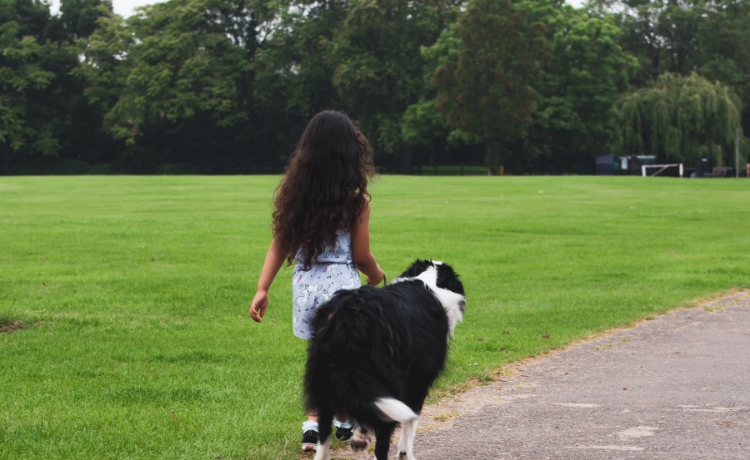As a parent, it goes without saying that you want the best for your kid. You want to encourage their creativity and exploration, support them through times of learning and growing, and ensure their safety. Kids depend on their parents in many ways, one of them being to make sure they are not in harm’s way and are avoiding any potentially dangerous situations. As kids are probably not going to be reading these blog posts, here are some tips to keep in mind in order to keep your children as safe as possible around dogs:
Always ask the owner before petting or approaching a dog! Teach your children to keep their distance while asking and then approach if they receive a verbal confirmation that it is safe to do so. Some dogs might be socially anxious, aggressive, or just unfriendly in terms of not wanting to be around and/or touched by strangers. Some dogs, on the other hand, are as friendly as you can get and love all the attention in the world. Teach your children how to effectively assess the situation and ask for what they want; this will not only help them learn how to better articulate themselves, but also help them learn how to develop the tools to keep themselves safe as well.-
The “sniff test” is a no go! Instead, use “pat, pet, pause” when approaching new dogs.
-
PAT: Pat your leg and invite the dog into your space. If they come, great! If not, they don’t want to be touched.
-
PET: Avoid petting a dog’s head. Other great areas to pet are: the shoulder, under the chin, or on the side.
-
PAUSE: Give the dog a chance to leave if they don’t want to be touched anymore. Pet for three seconds and pause for another three. If they stay, they’re enjoying it and you can continue gently and carefully, being sure to pause in another 3 seconds!
Curbicus Team Tip: Dogs generally use their mouth, ears, eyes, and tail to show you how they’re feeling!
-
Teach your kids to respect the core four: body, space, stuff, and feelings!
-
BODY: Don’t sit on dogs but sit next to them/with them. Dogs prefer to be pet from collar to tail (not on the head!) by strangers and don’t like to be picked up.
-
SPACE: Invite dogs into your space and not the other way around! Use hand movements to beckon them to come, and if they do, it means they want to come.. In general, don’t approach dogs who are eating or chewing and/or resting in a crate. Lastly, avoid putting your face in front of a dog’s face; be gentle and careful!
-
STUFF: Don’t take anything away from dogs, even if it’s yours; get a grown up to help before approaching! A good way to interact with your dog and their stuff is to train and play with them using their toys and treats.
-
FEELINGS: Try to do things that your dog likes to interact with them! Maybe playing a game of fetch, rubbing their belly, or going on a walk is just what they need to feel loved and appreciated. In general, don’t yell at or tease dogs and don’t make them do things they don’t want to do!
-
Bonus tips for parents:
-
Protect your dog too! Give your dog some space if they’re getting too much attention and/or seem like they are overwhelmed or might need a break. Kids can be unpredictable and scary for dogs, at times; pay attention to when you might need to intervene and give your dog time to breathe.
-
Respect and appreciate the grumble! Don’t lash out at your dog if they grumble at your child or a stranger. Appreciate that they are communicating with you and follow their lead. Give them some space and let them tell you what they need.





